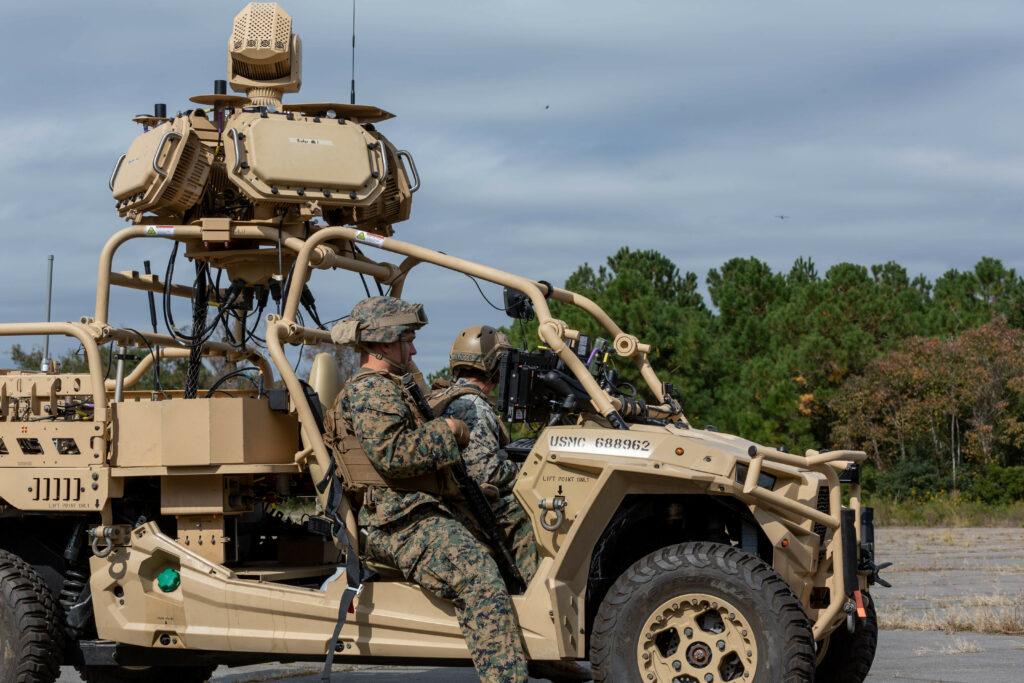The US Marine Corps has tested its newest ground-based air defense system designed to deter and neutralize drones.
Called the Light Marine Air-Defense Integrated System (LMADIS), the platform is mounted on a Polaris MRZR vehicle for deployment in austere environments by air transport.
It uses another 4-seater Polaris MRZR to house the CM262U optic, which serves as the “eyes” of the system.
The LMADIS uses RPS-42 radar to provide 360-degree air surveillance and long-range drone detection capability.
It also has a dismountable electronic warfare system to disrupt enemy drones and a multi-channel manpack radio system to communicate everything it detects to nearby troops.
“The difference is the expeditionary aspect of it being able to be loaded on aircraft used for a wide set of missions [such as] CH-53E Super Stallions, CH-53K King Stallions, and MV-22B Ospreys,” Staff Sgt. Dustin Yonkings explained.
Increasing Drone Threat
The development and deployment of the LMADIS is viewed by the US Marine Corps as an important step in bolstering its overall air defense capability.
The service recognizes the rising use of commercial off-the-shelf drones for offensive warfare, so it is adjusting its ground-based drone defenses.
The LMADIS is a positive addition to the marine arsenal because it mitigates threats by disrupting the electronic signal between the unmanned aircraft system and its controller.
Amid the advent of different types of drones, targeting their electronic signals is still an effective way to disrupt them because the required frequencies used to pilot unmanned aircraft systems remain unchanged.
“Due to the current drone threat, we need an expeditionary system that will combat it,” Yonkings said. “The LMADIS serves as a system that can be deployed at a moment’s notice and attached to units that need counter-[drone] capabilities.”



